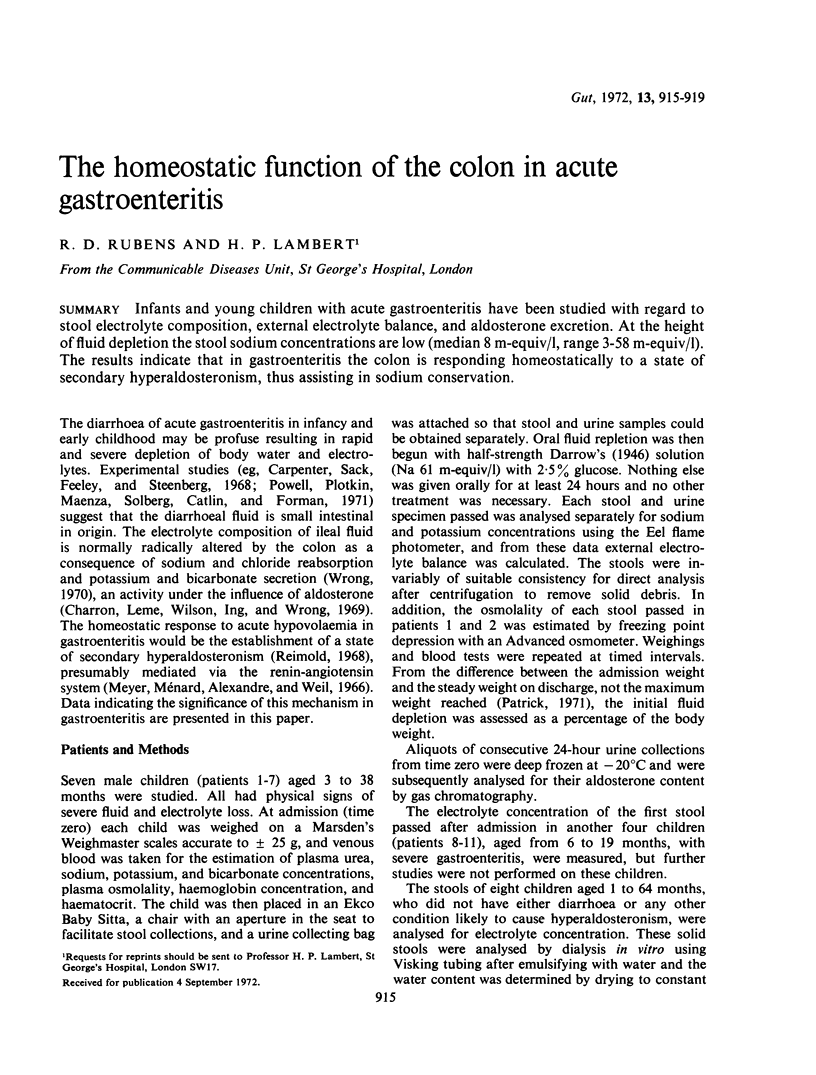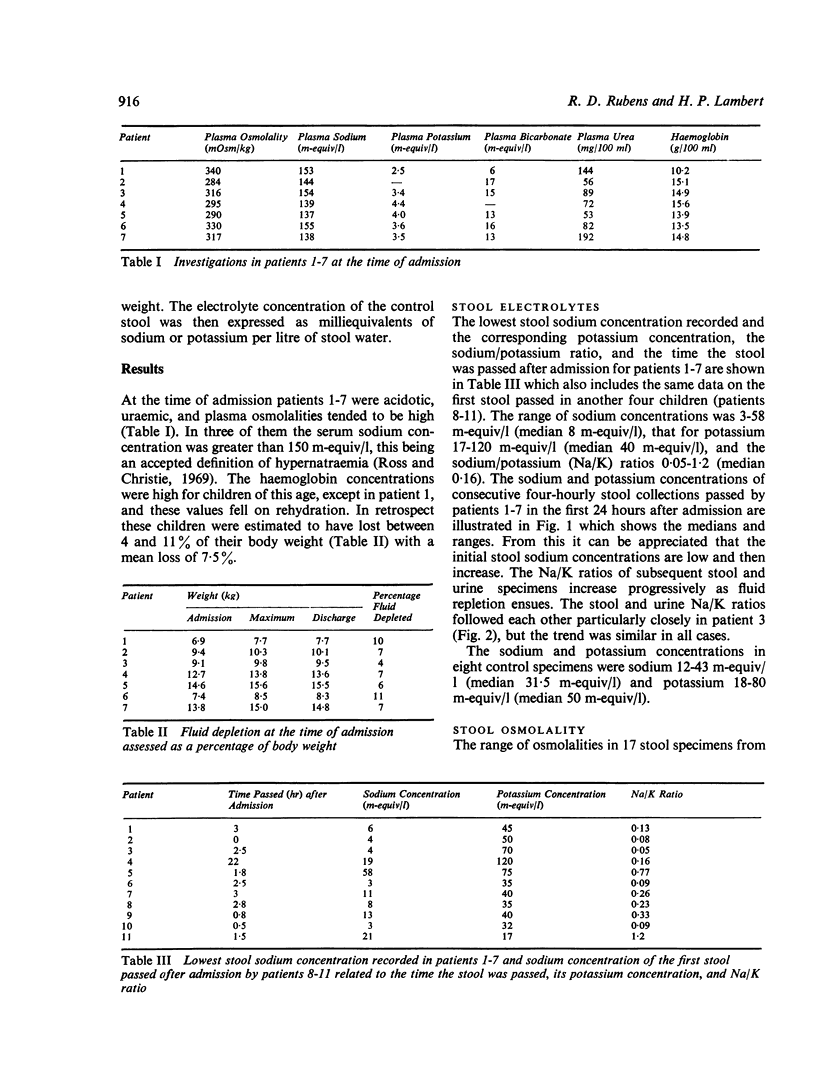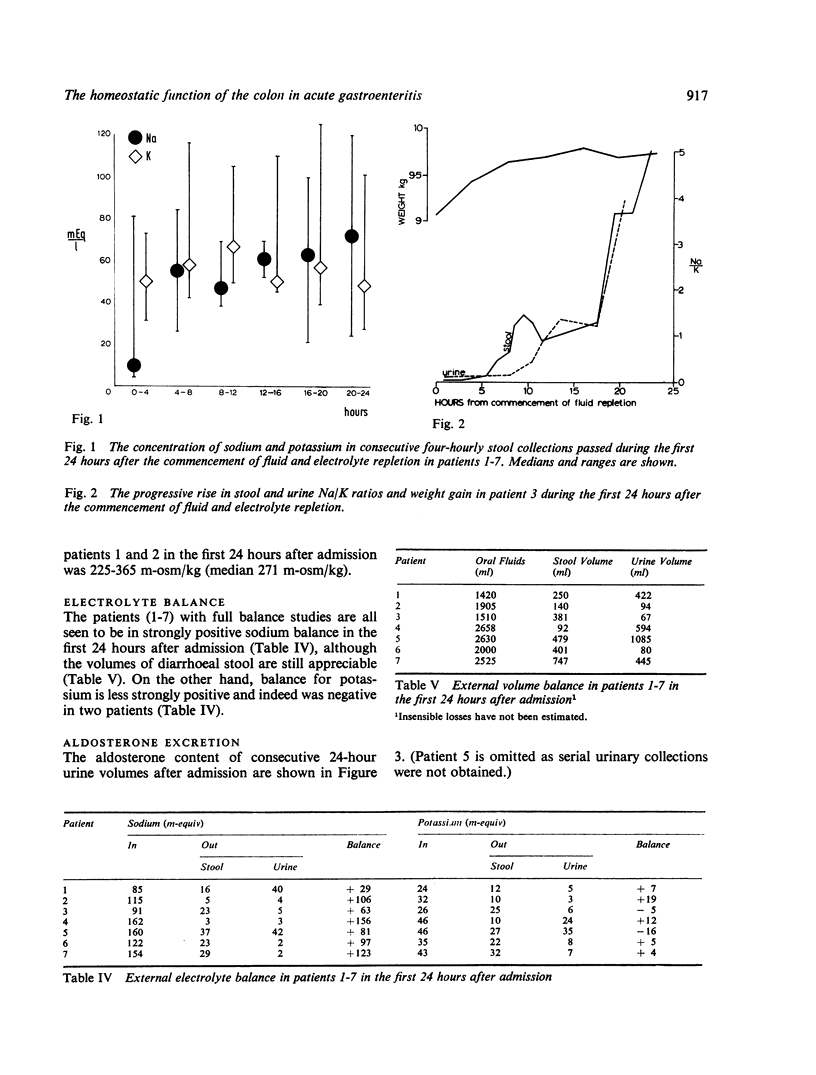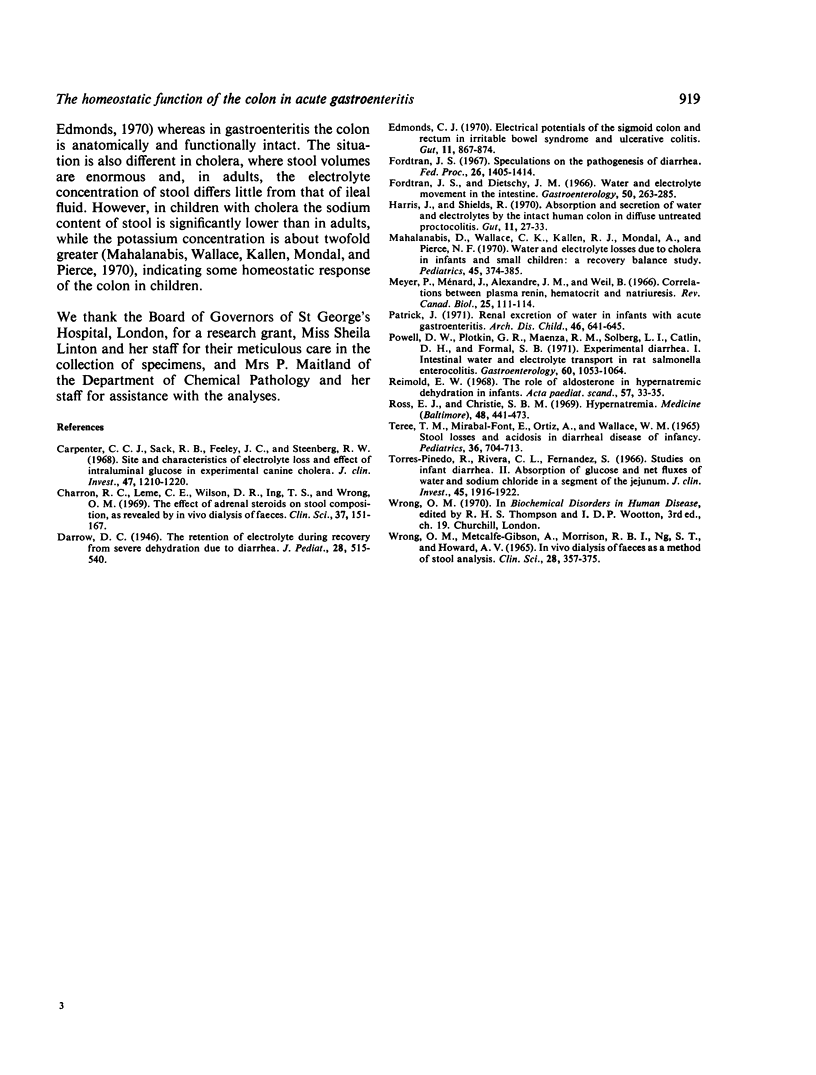Abstract
Infants and young children with acute gastroenteritis have been studied with regard to stool electrolyte composition, external electrolyte balance, and aldosterone excretion. At the height of fluid depletion the stool sodium concentrations are low (median 8 m-equiv/1, range 3-58 m-equiv/1). The results indicate that in gastroenteritis the colon is responding homeostatically to a state of secondary hyperaldosteronism, thus assisting in sodium conservation.
Full text
PDF




Selected References
These references are in PubMed. This may not be the complete list of references from this article.
- Carpenter C. C., Sack R. B., Feeley J. C., Steenberg R. W. Site and characteristics of electrolyte loss and effect of intraluminal glucose in experimental canine cholera. J Clin Invest. 1968 May;47(5):1210–1220. doi: 10.1172/JCI105810. [DOI] [PMC free article] [PubMed] [Google Scholar]
- Charron R. C., Leme C. E., Wilson D. R., Ing T. S., Wrong O. M. The effect of adrenal steroids on stool composition, as revealed by in vivo dialysis of faeces. Clin Sci. 1969 Aug;37(1):151–167. [PubMed] [Google Scholar]
- Edmonds C. J. Electrical potentials of the sigmoid colon and rectum in irritable bowel syndrome and ulcerative colitis. Gut. 1970 Oct;11(10):867–874. doi: 10.1136/gut.11.10.867. [DOI] [PMC free article] [PubMed] [Google Scholar]
- Fordtran J. S., Dietschy J. M. Water and electrolyte movement in the intestine. Gastroenterology. 1966 Feb;50(2):263–285. [PubMed] [Google Scholar]
- Fordtran J. S. Speculations on the pathogenesis of diarrhea. Fed Proc. 1967 Sep;26(5):1405–1414. [PubMed] [Google Scholar]
- Harris J., Shields R. Absorption and secretion of water and electrolytes by the intact human colon in diffuse untreated proctocolitis. Gut. 1970 Jan;11(1):27–33. doi: 10.1136/gut.11.1.27. [DOI] [PMC free article] [PubMed] [Google Scholar]
- Mahalanabis D., Wallace C. K., Kallen R. J., Mondal A., Pierce N. F. Water and electrolyte losses due to cholera in infants and small children: a recovery balance study. Pediatrics. 1970 Mar;45(3):374–385. [PubMed] [Google Scholar]
- Meyer P., Ménard J., Alexandre J. M., Weil B. Correlations between plasma renin, hematocrit and natriuresis. Rev Can Biol. 1966 Jun;25(2):111–114. [PubMed] [Google Scholar]
- Patrick J. Renal excretion of water in infants with acute gastroenteritis. Arch Dis Child. 1971 Oct;46(249):641–645. doi: 10.1136/adc.46.249.641. [DOI] [PMC free article] [PubMed] [Google Scholar]
- Powell D. W., Plotkin G. R., Maenza R. M., Solberg L. I., Catlin D. H., Formal S. B. Experimental diarrhea. I. Intestinal water and electrolyte transport in rat salmonella enterocolitis. Gastroenterology. 1971 Jun;60(6):1053–1064. [PubMed] [Google Scholar]
- Reimold E. W. The role of aldosterone in hypernatremic dehydration in infants. Acta Paediatr Scand. 1968 Jan;57(1):33–35. doi: 10.1111/j.1651-2227.1968.tb07282.x. [DOI] [PubMed] [Google Scholar]
- Ross E. J., Christie S. B. Hypernatremia. Medicine (Baltimore) 1969 Nov;48(6):441–473. doi: 10.1097/00005792-196948060-00002. [DOI] [PubMed] [Google Scholar]
- Teree T. M., Mirabal-Font E., Ortiz A., Wallace W. M. Stool losses and acidosis in diarrheal disease of infancy. Pediatrics. 1965 Nov;36(5):704–713. [PubMed] [Google Scholar]
- Torres-Pinedo R., Rivera C. L., Fernández S. Studies on infant diarrhea. II. Absorption of glucose and net fluxes of water and sodium chloride in a segment of the jejunum. J Clin Invest. 1966 Dec;45(12):1916–1922. doi: 10.1172/JCI105496. [DOI] [PMC free article] [PubMed] [Google Scholar]
- WRONG O., METCALFE-GIBSON A., MORRISON R. B., NG S. T., HOWARD A. V. IN VIVO DIALYSIS OF FAECES AS A METHOD OF STOOL ANALYSIS. I. TECHNIQUE AND RESULTS IN NORMAL SUBJECTS. Clin Sci. 1965 Apr;28:357–375. [PubMed] [Google Scholar]


